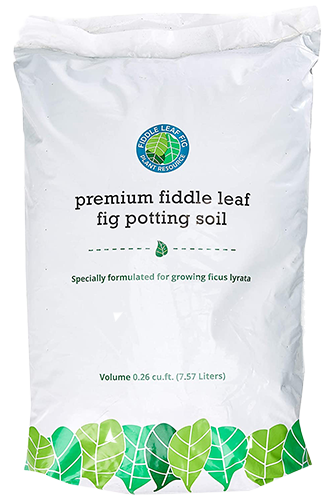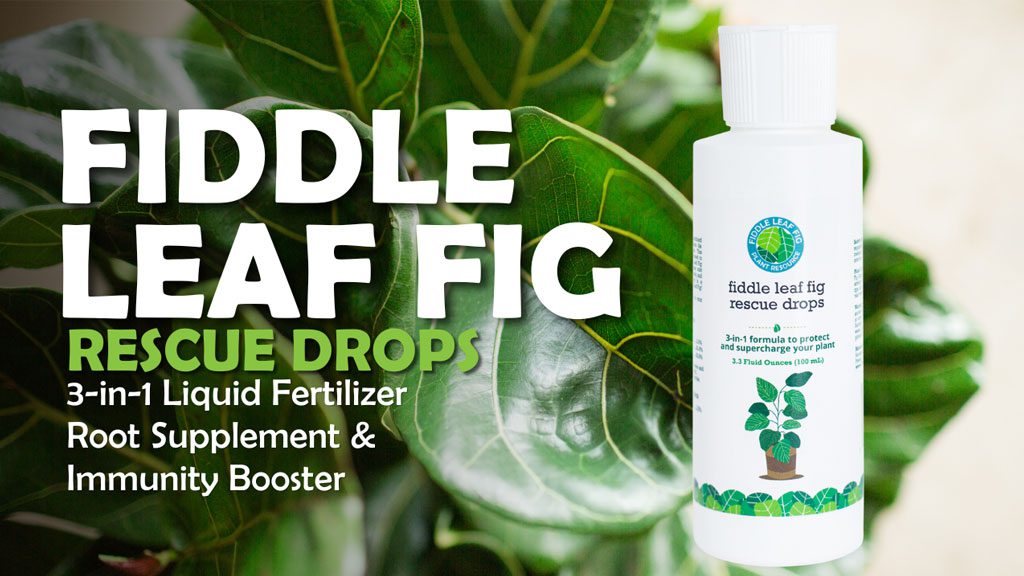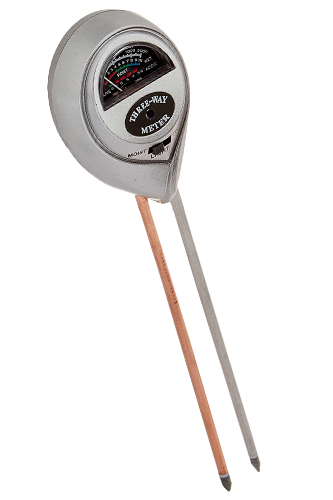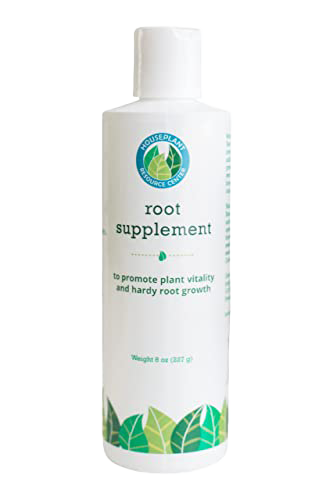Though the fiddle leaf fig is a popular houseplant to own, it’s tricky to care for. It generally doesn’t respond well to being moved around, and requires adequate sunlight (natural but indirect) and, of course, proper drainage. The soil is key and it’s important to know the best pH for fiddle leaf figs.
The fiddle leaf fig is a popular flowering plant native to western Africa. It typically blooms in tropical rainforests and can grow upwards of 40 or 50 feet tall.
The leaves usually follow the same shape pattern and often have a broad apex but narrow middle. Many say they resemble a fiddle or a lyre, hence the name. In some areas, it’s even referred to as a banjo fig.
The leaves of the fiddle leaf fig are known to have a leathery texture with a wavy margin and prominent veins.
It’s not uncommon for these types of plants to be grown as a houseplant in temperate areas. In this case, it typically stays on the shorter end and can grow up to about 10 feet if given proper care. An indoor fiddle leaf fig does not flower or fruit. In fact, this plant rarely flowers outside of its native area.
Choosing Fiddle Leaf Figs
Fiddle leaf figs are typically available at many local nurseries or garden centers. There are many things to be aware of when in the market for this type of plant. Nothing’s worse than thinking you’ve chosen a great specimen but quickly realizing that it’s riddled with disease. Follow the tips below when choosing a new fiddle leaf fig to join your houseplant family.
First, check the condition of the leaves. Be sure they are free of any brown spots or blemishes. The leaves should be completely green and healthy.
Next, take a look at the size and shape of the leaves. If the fiddle leaf figs are small in shape, curling at all, droopy, or even dusty, it might be an indicator of a bad plant. These leaves should be strong, large, and shiny.
If the plant is healthy enough, it should have enough energy to be sprouting new leaves. Look at the stem of the plant and see if any new growths are forming. This will indicate that the plant is healthy and ready to thrive even when moved to a new environment.
The fact that the plant seems to be able to grow new buds isn’t quite enough. Be sure the new growth is in good shape. If you notice a bud is struggling, it’s better to find a plant that has buds that seem much perkier.
Bugs can be a problem in fiddle leaf figs. It’s smart to try and check the small crevices in the plants before deciding to take them home. Be sure to use the light on your phone to check the hard-to-see places. If any small bugs are present, find another plant.
Taking Care of Fiddle Leaf Figs
Fiddle leaf figs are known to be one of the most difficult houseplants to take care of. It’s not necessarily about the upkeep but more about getting the growing conditions correct. If you put in the effort to care for these plants, they can be very rewarding.
Fiddle leaf figs require bright light to grow. Be sure it’s filtered, as direct sunlight can damage the leaves. To prevent the plant from growing toward the sun, it’s recommended that the plant be turned every few days, so all the leaves can get an even amount of sunlight. This will help the plant grow evenly over the course of time. A fast-draining potting mix should be sufficient for fiddle leaf fig plants. More important than the type of soil, be sure that it’s able to drain well. We recommend our Premium Fiddle Leaf Fig Potting Soil along with Houseplant Smart Gravel.
These plants are accustomed to a moderate amount of moisture in the soil. If you notice that the leaves are beginning to wilt and lose their bright green color, it’s most likely due to a lack of water in the soil. If the plant is overwatered, you might notice the entire plant drooping; it might even develop root rot, which can kill the plant altogether.
A general rule of thumb is to water your plant when the top inch of soil is dry to the touch. During the winter months, it’s recommended to water the plant slightly less than normal.
Remember to dust the leaves about once a week. Use a damp cloth to make sure no dust or dirt builds up on the leaves. This helps the leaves not only look shinier and brighter but also allows them to absorb more sunlight throughout the day.
If you notice any damaged or dead leaves, be sure to trim them as soon as possible. These types of leaves don’t do any good for a fiddle leaf fig.
The Best pH for Fiddle Leaf Figs
If your plant seems off but nothing is blatantly wrong with the leaves or stem, it could be an issue with the soil’s pH levels. Each plant has a specific level of pH that they feel most comfortable with. It’s important to know this about each of your plants to ensure they’re properly cared for.
In general, pH levels in soil range from about 3 to 10. The number is dependent upon a certain number of factors, including things like the soil material itself and the amount of rainwater it might get. A healthy fiddle leaf fig should have a pH between 6 and 7.
Nutrients become available depending on the levels of pH in the soil. This means that if the pH level is off, the plant may receive insufficient nutrients. If yellowing occurs in the leaves or veins of the plant, the soil might be lacking in acidity.
A soil test may be performed to determine the exact pH of the soil. A 3-in-1 moisture meter can help discover the pH level of your soil; and once this number is known, certain materials may be used to either raise or lower the pH level in the soil. In general, limestone is said to raise pH levels and sulfur is used to lower it. Be sure to continue monitoring the pH levels in the soil to ensure it eventually levels out where you need it.
One common home remedy for this type of plant is coffee. Many people think that to adjust or level the pH in fiddle leaf figs, they can pour diluted coffee or coffee grounds directly onto the soil of the plant.
Although it might be true that adding an acidic material such as coffee to the soil may increase the pH as needed, this is not always the case for fiddle leaf figs, as the grounds may absorb excess moisture and other nutrients from the soil, impairing the overall plant growth.
If the pH in your fiddle leaf fig is not at the level it should be, we recommend repotting and using a well-balanced fertilizer. If this isn’t possible, alkaline water drops might be a good remedy to adjust your plant’s pH.
Pests and Diseases in Fiddle Leaf Figs
No major pest or disease issues wreak havoc on fiddle leaf fig plants, but they can be prone to a type of bug called spider mites; these small bugs are visible within the crevasses of the leaves and stem. They may also succumb to some common bacterial or fungal infections; leaf damage, spots, or dark patches might indicate an infection.
It’s best to treat infections as soon as possible with our Root Supplement. To prevent these diseases in the first place, make sure your plant is located in an area with proper air circulation. If your fiddle is sitting in an area that keeps it too damp, a fungal infection can take root. Be aware of the moisture and humidity in the air so that your plant is not overly wet.
The Takeaway
Fiddle leaf figs are beautiful plants and can surely be a conversation piece in your home. And once you get the growing conditions right, it’s not too difficult to keep your plant healthy and thriving.
Make sure you purchase a plant with lots of potential so that you are set up for success. After that, spend time making sure your plant thrives in the conditions you create for it. Adjust as needed to ensure your fiddle is happy and healthy.
pH levels are an important aspect of growing fiddles that many people overlook, so be sure your fiddle leaf fig has a pH level between 6 and 7. Be sure to look for clues in the color and texture of the leaves, and check your plant every so often for abnormalities or small bugs that may cause leaves to deteriorate.
Follow these steps to allow your fiddle leaf fig to thrive in your home and add life to your space!


















